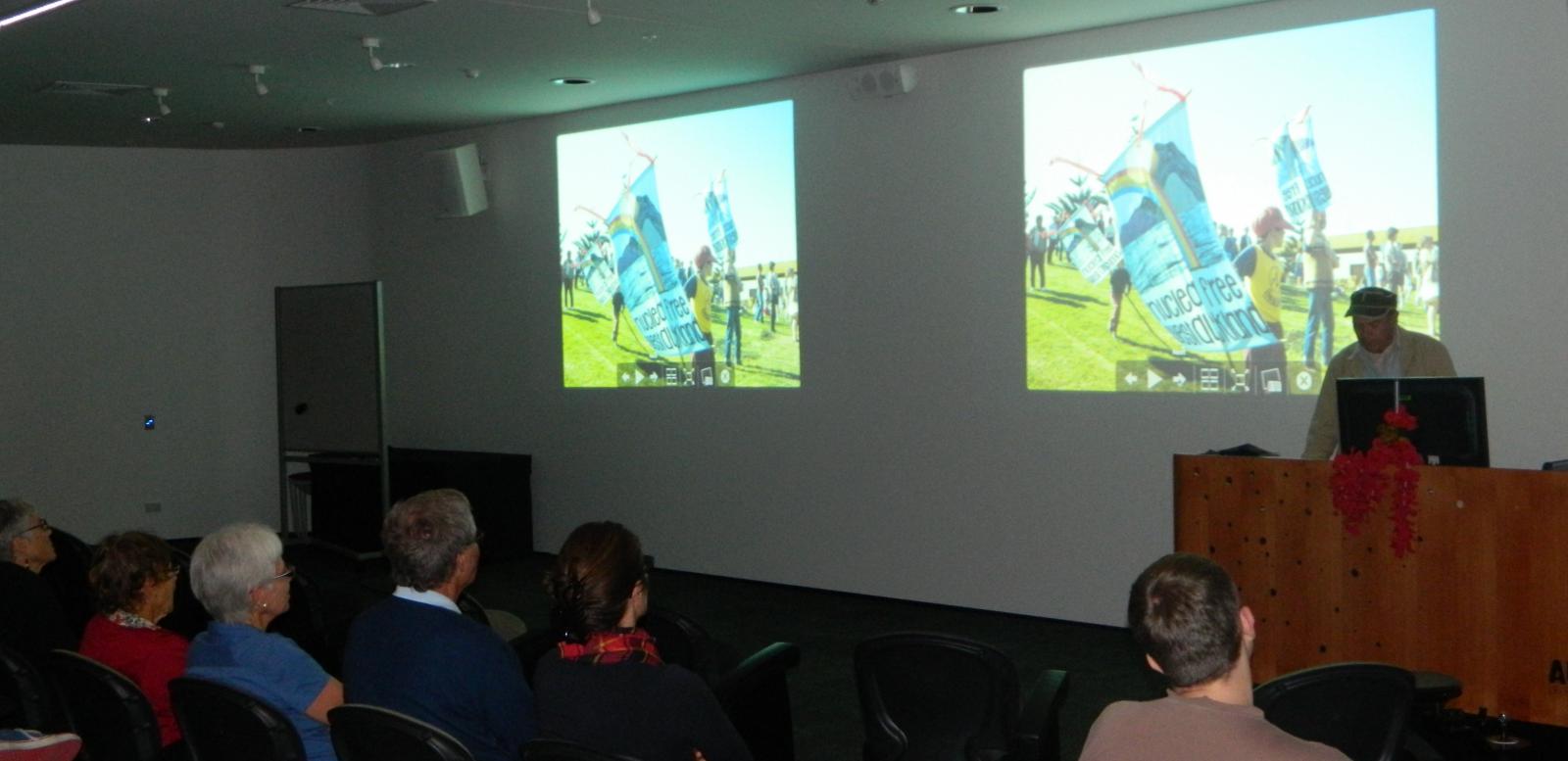AUCKLAND (Pacific Media Watch): Social justice photographer John Miller believes his work brings alive issues for young people today and is a critical historical record.
Outlining the origins of the Nuclear-Free and Independent Pacific (NFIP) movement, he spoke at a seminar last night about the 1985 Rainbow Warrior bombing, the hikoi and how the NFIP song Ngā Iwi E became a popular waiata in New Zealand.
Ngā Iwi E was written originally for the Fourth Pacific Festival of Arts in New Caledonia, but that was called off due to Kanak Socialist National Liberation Front (FLNKS) protests against French colonial rule.
As a photographer over several decades, Miller has documented most of the key important social justice movements in New Zealand and has vivid recollections. He won a NZ Media Peace Prize in 2003 and has had numerous exhibitions of his work.
In an interview with Pacific Media Watch after the public seminar at AUT University hosted by the Pacific Media Centre, Miller described how he viewed the importance of his work:
I guess I have accumulated an interesting collection of images that are quite useful just to show younger generations what has gone on in the past. Because for those of us of a certain age, you know, we lived through it all, but then of course we need to recall that there are lots of younger people around the place for whom this is – all these matters – are just sort of history book entries.
And it’s good for them to have visual images that are generated from beyond the newspaper areas. Of course, photographs are great for evoking people’s memories, and just sort of explaining to people exactly what happens in those days.
DD: We heard one of the participants here mention that they [Miller’s photographs] represent an alternative viewpoint of history. Do you agree with that?
JM: You know, people can document things, events in particular ways – and I suppose, whether you support a particular issue or not can show up in the sorts of images you get.
A person photographing…you try and be dispassionate, because you just want to show what happens. But I guess, the mere fact that one sort of chooses to get involved and photographing these issues shows that, you know, you support the cause – whether it’s sort of sporting tours against South Africa, various wars, or genetic engineering.
It’s just, you tend to, sort of, get the good angles on the banners and get the banners stretched so you can read them properly.
The [1981] Springbok tour, I suppose, that was a separate sort of situation by itself. I have just photographed what was going on in front of me as much as I could. And in the last 30 years it is quite interesting to see what we sort of became inured to, and sort of accepted as, you know, this is what it’s like at the moment.
And we’ve just got barbed wire and jumbo bins everywhere, and the police look like invaders from Mars with truncheons and visors. From 30 years down the track, people looking at it just cannot believe that the place was almost on a civil war footing.
So it is really very interesting to have a whole set of photographs, and in this particular instance I have the audio as well, so people can really – it really hits hard when they see the colour images. So much of the media today is in colour, but back then most of it was in black and white.
Apart from television news, which is very ephemeral, it’s on the screen and vanishes. The print media and books generally, the Springbok tour is a black and white visual history, apart from a very small handful of us who photographed it in colour.
And so, when you see it in colour, you get an almost immediacy, because contemporary news is in colour, so it sorts of drags it out of an historical angle. And it sorts of seem much more real.
It could have been shot last week, or it could have been shot in some other country where they’re having these big, sort of, violent demonstrations at the moment. So, that’s an interesting, sort of, consequence of documenting a particular violent situation in that particular way.
Because usually I’ve been photographing in black and white for quite a while, but on some occasions I can see that colour does have an interesting effect on people who have a look at the images, especially along, quite some time down the track."
This work is licensed under a Creative Commons Attribution-NonCommercial 3.0 New Zealand Licence.





